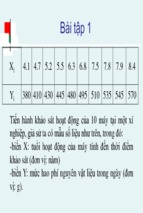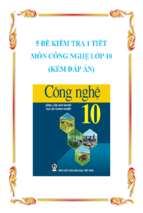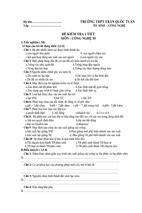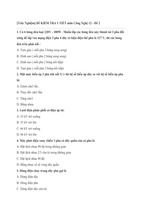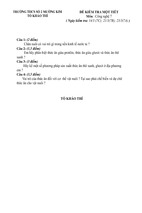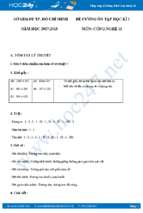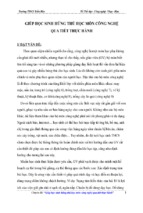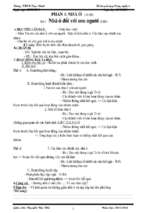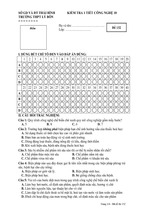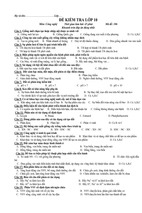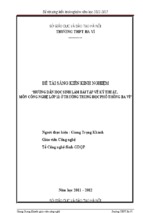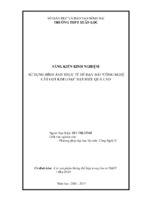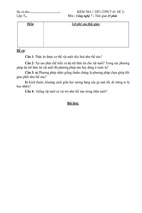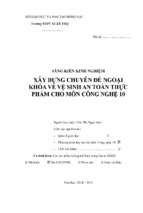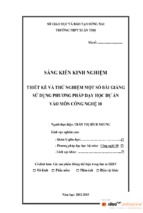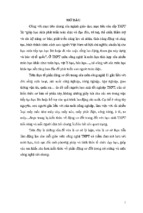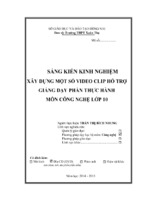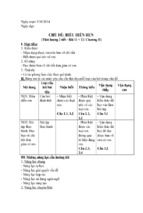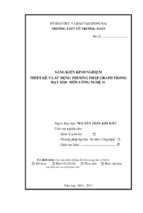THE
TM
J2EE Tutorial
TM
THE
J2EE Tutorial
Stephanie Bodoff
Dale Green
Kim Haase
Eric Jendrock
Monica Pawlan
Beth Stearns
Boston
San Francisco • New York • Toronto • Montreal
London • Munich • Paris • Madrid
Capetown • Sydney • Tokyo • Singapore • Mexico City
•
Copyright © 2002 Sun Microsystems, Inc. 901 San Antonio Road, Palo Alto, CA 94303 USA.
All rights reserved.
Duke logo™ designed by Joe Palrang.
Sun, Sun Microsystems, Sun logo, Java, JDBC, JavaBeans, Enterprise JavaBeans, JavaServer Pages,
J2EE, J2SE, JavaMail, Java Naming and Directory Interface, EJB, and JSP are trademarks or registered
trademarks of Sun Microsystems, Inc. UNIX® is a registered trademark in the United States and other
countries, exclusively licensed through X/Open Company, Ltd. .
THIS PUBLICATION IS PROVIDED “AS IS” WITHOUT WARRANTY OF ANY KIND,
EITHER EXPRESS OR IMPLIED, INCLUDING, BUT NOT LIMITED TO, THE IMPLIED
WARRANTIES OF MERCHANTABILITY, FITNESS FOR A PARTICULAR PURPOSE, OR
NON-INFRINGEMENT.
THIS PUBLICATION COULD INCLUDE TECHNICAL INACCURACIES OR TYPOGRAPHICAL ERRORS. CHANGES ARE PERIODICALLY ADDED TO THE INFORMATION HEREIN; THESE CHANGES WILL BE INCORPORATED IN NEW EDITIONS OF
THE PUBLICATION. SUN MICROSYSTEMS, INC., MAY MAKE IMPROVEMENTS
AND/OR CHANGES IN ANY TECHNOLOGY, PRODUCT, OR PROGRAM DESCRIBED
IN THIS PUBLICATION AT ANY TIME.
Pearson Education Corporate Sales Division
One Lake Street
Upper Saddle River, NJ 07458
(800) 382-3419
[email protected]
Visit Addison-Wesley on the Web: www.aw.com/cseng/
Library of Congress Control Number: 2002102527
All rights reserved. No part of this publication may be reproduced, stored in a retrieval system,
or transmitted, in any form, or by any means, electronic, mechanical, photocopying, recording,
or otherwise, without the prior consent of the publisher. Printed in the United States of America.
Published simultaneously in Canada.
ISBN 0-201-79168-4
Text printed on recycled paper
1 2 3 4 5 6 7 8 9 10—MA—0605040302
First printing, March 2002
Contents
Foreword . . . . . . . . . . . . . . . . . . . . . . . . . . . . . . . . . xvii
Preface . . . . . . . . . . . . . . . . . . . . . . . . . . . . . . . . . . .xxi
Chapter 1:
Overview. . . . . . . . . . . . . . . . . . . . . . . . . . . . . . . . . . . 1
Distributed Multitiered Applications
J2EE Components
J2EE Clients
Web Components
Business Components
Enterprise Information System Tier
J2EE Containers
Container Services
Container Types
Packaging
Development Roles
J2EE Product Provider
Tool Provider
Application Component Provider
Application Assembler
Application Deployer and Administrator
Reference Implementation Software
Database Access
J2EE APIs
Simplified Systems Integration
Tools
2
3
4
6
6
8
8
8
9
10
11
12
12
12
13
14
14
15
15
18
19
v
vi
CONTENTS
Chapter 2:
Getting Started . . . . . . . . . . . . . . . . . . . . . . . . . . . . .21
Setting Up
Getting the Example Code
Getting the Build Tool (ant)
Checking the Environment Variables
Starting the J2EE Server
Starting the deploytool
Creating the J2EE Application
Creating the Enterprise Bean
Coding the Enterprise Bean
Compiling the Source Files
Packaging the Enterprise Bean
Creating the J2EE Application Client
Coding the J2EE Application Client
Compiling the Application Client
Packaging the J2EE Application Client
Specifying the Application Client’s Enterprise Bean Reference
Creating the Web Client
Coding the Web Client
Compiling the Web Client
Packaging the Web Client
Specifying the Web Client’s Enterprise Bean Reference
Specifying the JNDI Names
Deploying the J2EE Application
Running the J2EE Application Client
Running the Web Client
Modifying the J2EE Application
Modifying a Class File
Adding a File
Modifying the Web Client
Modifying a Deployment Setting
Common Problems and Their Solutions
Cannot Start the J2EE Server
Compilation Errors
Deployment Errors
J2EE Application Client Runtime Errors
Web Client Runtime Errors
Detecting Problems With the Verifier Tool
Comparing Your EAR Files with Ours
When All Else Fails
22
22
22
23
23
23
24
24
24
26
26
28
28
31
31
32
32
32
34
34
35
35
37
37
38
39
39
39
39
40
40
40
41
42
43
44
45
45
45
vii
CONTENTS
Chapter 3:
Enterprise Beans . . . . . . . . . . . . . . . . . . . . . . . . . . . . 47
What Is an Enterprise Bean?
Benefits of Enterprise Beans
When to Use Enterprise Beans
Types of Enterprise Beans
What Is a Session Bean?
State Management Modes
When to Use Session Beans
What Is an Entity Bean?
What Makes Entity Beans Different from Session Beans?
Container-Managed Persistence
When to Use Entity Beans
What Is a Message-Driven Bean?
What Makes Message-Driven Beans Different from Session
and Entity Beans?
When to Use Message-Driven Beans
Defining Client Access with Interfaces
Remote Access
Local Access
Local Interfaces and Container-Managed Relationships
Deciding on Remote or Local Access
Performance and Access
Method Parameters and Access
The Contents of an Enterprise Bean
Naming Conventions for Enterprise Beans
The Life Cycles of Enterprise Beans
The Life Cycle of a Stateful Session Bean
The Life Cycle of a Stateless Session Bean
The Life Cycle of an Entity Bean
The Life Cycle of a Message-Driven Bean
Chapter 4:
48
48
49
49
49
50
51
51
52
53
56
56
57
57
58
58
59
59
60
61
61
62
62
63
63
64
65
67
A Session Bean Example . . . . . . . . . . . . . . . . . . . . . 69
The CartEJB Example
Session Bean Class
Home Interface
Remote Interface
Helper Classes
Running the CartEJB Example
Other Enterprise Bean Features
Accessing Environment Entries
Comparing Enterprise Beans
Passing an Enterprise Bean’s Object Reference
70
70
74
76
76
76
78
78
80
80
viii
CONTENTS
Chapter 5:
Bean-Managed Persistence Examples. . . . . . . . . .83
The SavingsAccountEJB Example
Entity Bean Class
Home Interface
Remote Interface
Running the SavingsAccountEJB Example
deploytool Tips for Entity Beans with
Bean-Managed Persistence
Mapping Table Relationships for Bean-Managed Persistence
One-to-One Relationships
One-to-Many Relationships
Many-to-Many Relationships
Primary Keys for Bean-Managed Persistence
The Primary Key Class
Primary Keys in the Entity Bean Class
Getting the Primary Key
Handling Exceptions
Chapter 6:
84
84
94
96
97
99
99
99
103
110
113
113
115
116
116
Container-Managed Persistence Examples . . . .119
Overview of the RosterApp Application
The PlayerEJB Code
Entity Bean Class
Local Home Interface
Local Interface
A Guided Tour of the RosterApp Settings
RosterApp
RosterClient
RosterJAR
TeamJAR
Method Invocations in RosterApp
Creating a Player
Adding a Player to a Team
Removing a Player
Dropping a Player from a Team
Getting the Players of a Team
Getting a Copy of a Team’s Players
Finding the Players by Position
Getting the Sports of a Player
Running the RosterApp Example
Setting Up
Deploying the Application
Running the Client
120
121
122
126
127
128
128
129
130
131
136
137
138
139
140
141
142
144
145
147
147
147
148
ix
CONTENTS
deploytool Tips for Entity Beans with
Container-Managed Persistence
Specifying the Bean’s Type
Selecting the Persistent Fields and Abstract Schema Name
Defining EJB QL Queries for Finder and Select Methods
Generating SQL and Specifying Table Creation
Specifying the Database JNDI Name, User Name,
and Password
Defining Relationships
Primary Keys for Container-Managed Persistence
The Primary Key Class
Primary Keys in the Entity Bean Class
Generating Primary Key Values
Chapter 7:
150
150
151
151
152
153
A Message-Driven Bean Example . . . . . . . . . . . . 155
Example Application Overview
The J2EE Application Client
The Message-Driven Bean Class
The onMessage Method
The ejbCreate and ejbRemove Methods
Running the SimpleMessageEJB Example
Starting the J2EE Server
Creating the Queue
Deploying the Application
Running the Client
deploytool Tips for Message-Driven Beans
Specifying the Bean’s Type and Transaction Management
Setting the Message-Driven Bean’s Characteristics
deploytool Tips for JMS Clients
Setting the Resource References
Setting the Resource Environment References
Specifying the JNDI Names
Chapter 8:
148
148
149
149
149
156
157
157
158
159
159
159
159
159
160
160
161
161
162
162
163
163
Enterprise JavaBeans Query Language . . . . . . . 165
Terminology
Simplified Syntax
166
167
x
CONTENTS
Example Queries
Simple Finder Queries
Finder Queries That Navigate to Related Beans
Finder Queries with Other Conditional Expressions
Select Queries
Full Syntax
BNF Symbols
BNF Grammar of EJB QL
FROM Clause
Path Expressions
WHERE Clause
SELECT Clause
EJB QL Restrictions
Chapter 9:
167
167
169
170
172
173
173
173
176
179
182
190
191
Web Clients and Components. . . . . . . . . . . . . . . .193
Web Client Life Cycle
Web Application Archives
Creating a WAR File
Adding a WAR File to an EAR File
Adding a Web Component to a WAR File
Configuring Web Clients
Application-Level Configuration
WAR-Level Configuration
Component-Level Configuration
Deploying Web Clients
Running Web Clients
Updating Web Clients
Internationalizing Web Clients
194
196
197
197
198
199
199
200
202
203
203
204
206
Chapter 10: Java Servlet Technology . . . . . . . . . . . . . . . . . . . .209
What Is a Servlet?
The Example Servlets
Troubleshooting
Servlet Life Cycle
Handling Servlet Life-Cycle Events
Handling Errors
Sharing Information
Using Scope Objects
Controlling Concurrent Access to Shared Resources
Accessing Databases
Initializing a Servlet
210
211
215
216
216
218
218
219
220
221
222
xi
CONTENTS
Writing Service Methods
Getting Information from Requests
Constructing Responses
Filtering Requests and Responses
Programming Filters
Programming Customized Requests and Responses
Specifying Filter Mappings
Invoking Other Web Resources
Including Other Resources in the Response
Transferring Control to Another Web Component
Accessing the Web Context
Maintaining Client State
Accessing a Session
Associating Attributes with a Session
Session Management
Session Tracking
Finalizing a Servlet
Tracking Service Requests
Notifying Methods to Shut Down
Creating Polite Long-Running Methods
222
223
225
227
229
230
232
234
234
236
237
238
238
238
239
240
241
242
242
243
Chapter 11: JavaServer Pages Technology . . . . . . . . . . . . . . . 245
What Is a JSP Page?
The Example JSP Pages
The Life Cycle of a JSP Page
Translation and Compilation
Execution
Initializing and Finalizing a JSP Page
Creating Static Content
Creating Dynamic Content
Using Objects within JSP Pages
JSP Scripting Elements
Including Content in a JSP Page
Transferring Control to Another Web Component
Param Element
Including an Applet
Extending the JSP Language
246
249
253
253
254
256
257
257
257
260
263
265
265
265
267
Chapter 12: JavaBeans Components in JSP Pages . . . . . . . . . 269
JavaBeans Component Design Conventions
Why Use a JavaBeans Component?
270
271
xii
CONTENTS
Creating and Using a JavaBeans Component
Setting JavaBeans Component Properties
Retrieving JavaBeans Component Properties
272
273
275
Chapter 13: Custom Tags in JSP Pages . . . . . . . . . . . . . . . . . . .279
What Is a Custom Tag?
The Example JSP Pages
Using Tags
Declaring Tag Libraries
Types of Tags
Defining Tags
Tag Handlers
Tag Library Descriptors
Simple Tags
Tags with Attributes
Tags With Bodies
Tags That Define Scripting Variables
Cooperating Tags
Examples
An Iteration Tag
A Template Tag Library
How Is a Tag Handler Invoked?
280
281
285
285
286
289
289
290
293
294
296
298
302
304
304
308
313
Chapter 14: Transactions. . . . . . . . . . . . . . . . . . . . . . . . . . . . . . .315
What Is a Transaction?
Container-Managed Transactions
Transaction Attributes
Rolling Back a Container-Managed Transaction
Synchronizing a Session Bean’s Instance Variables
Methods Not Allowed in Container-Managed Transactions
Bean-Managed Transactions
JDBC Transactions
JTA Transactions
Returning without Committing
Methods Not Allowed in Bean-Managed Transactions
Summary of Transaction Options for Enterprise Beans
Transaction Timeouts
Isolation Levels
Updating Multiple Databases
Transactions in Web Components
316
316
317
321
322
323
323
324
325
326
327
327
328
328
329
331
xiii
CONTENTS
Chapter 15: Security . . . . . . . . . . . . . . . . . . . . . . . . . . . . . . . . . . 333
Overview
Security Roles
Declaring and Linking Role References
Mapping Roles to J2EE Users and Groups
Web-Tier Security
Protecting Web Resources
Controlling Access to Web Resources
Authenticating Users of Web Resources
Using Programmatic Security in the Web Tier
Unprotected Web Resources
EJB-Tier Security
Declaring Method Permissions
Using Programmatic Security in the EJB Tier
Unprotected EJB-Tier Resources
Application Client-Tier Security
Specifying the Application Client’s Callback Handler
EIS-Tier Security
Configuring Sign-On
Container-Managed Sign-On
Component-Managed Sign-On
Configuring Resource Adapter Security
Propagating Security Identity
Configuring a Component’s Propagated Security Identity
Configuring Client Authentication
J2EE Users, Realms, and Groups
Managing J2EE Users and Groups
Setting Up a Server Certificate
334
335
335
337
337
337
338
338
340
340
340
341
341
342
342
343
343
344
344
344
345
346
346
347
348
349
350
Chapter 16: Resource Connections . . . . . . . . . . . . . . . . . . . . . 353
JNDI Names and Resource References
deploytool Tips for Resource References
Database Connections for Enterprise Beans
Coded Connections
Connection Pooling
Mail Session Connections
Running the ConfirmerEJB Example
URL Connections
Running the HTMLReaderEJB Example
354
354
357
357
359
359
361
362
363
xiv
CONTENTS
Chapter 17: J2EE Connector Architecture . . . . . . . . . . . . . . . . .365
About Resource Adapters
Resource Adapter Contracts
Administering Resource Adapters
The Black Box Resource Adapters
Transaction Levels
Properties
Configuring JDBC Drivers
Resource Adapter Tutorial
Setting Up
Deploying the Resource Adapter
Testing the Resource Adapter
Common Client Interface
Overview of the CCI
Programming with the CCI
Writing a CCI Client
CCI Tutorial
366
366
368
369
369
370
371
372
372
372
373
375
375
376
385
386
Chapter 18: The Duke’s Bank Application . . . . . . . . . . . . . . . . .391
Enterprise Beans
Session Beans
Entity Beans
Helper Classes
Database Tables
Protecting the Enterprise Beans
Application Client
The Classes and Their Relationships
BankAdmin Class
EventHandle Class
DataModel Class
Web Client
Design Strategies
Web Client Life Cycle
Protecting the Web Resources
Internationalization
393
394
397
397
398
400
400
401
403
404
405
408
409
410
414
414
xv
CONTENTS
Building, Packaging, Deploying, and Running the Application
Adding Groups and Users to the Realm
Starting the J2EE Server, deploytool, and Database
Compiling the Enterprise Beans
Packaging the Enterprise Beans
Compiling the Web Client
Packaging the Web Client
Compiling the J2EE Application Client
Packaging the J2EE Application Client
Packaging the Enterprise Archive File
Opening the Enterprise Archive File
Reviewing JNDI Names
Mapping the Security Roles to Groups
Deploying the Duke’s Bank Application
Creating the Bank Database
Running the J2EE Application Client
Running the Web Client
416
416
417
418
418
419
419
419
419
420
420
420
423
423
424
424
425
Appendix A: HTTP Overview . . . . . . . . . . . . . . . . . . . . . . . . . . . . 427
HTTP Requests
HTTP Responses
428
428
Appendix B: J2EE SDK Tools. . . . . . . . . . . . . . . . . . . . . . . . . . . . . 429
J2EE Administration Tool
Cleanup Tool
Cloudscape Server
Starting Cloudscape
Stopping Cloudscape
Running the Interactive SQL Tool
Cloudscape Server Configuration
Deployment Tool
J2EE Server
Key Tool
Packager Tool
EJB JAR File
Web Application WAR File
Application Client JAR File
J2EE Application EAR File
Specifying the Runtime Deployment Descriptor
Resource Adapter RAR File
430
431
431
432
432
432
433
434
435
435
436
436
437
437
438
438
439
xvi
CONTENTS
Realm Tool
Examples
runclient Script
Syntax
Example
Accessing a Remote Server
Preventing the User Name and Password Prompts
Verifier Tool
Command-Line Verifier
Stand-Alone GUI Verifier
440
440
441
441
442
442
443
443
443
444
Appendix C: Examples . . . . . . . . . . . . . . . . . . . . . . . . . . . . . . . . .445
Glossary . . . . . . . . . . . . . . . . . . . . . . . . . . . . . . . . . .449
About the Authors . . . . . . . . . . . . . . . . . . . . . . . . . .473
Index . . . . . . . . . . . . . . . . . . . . . . . . . . . . . . . . . . . .475
Foreword
I joined Sun—actually, a small Sun spin-off called FirstPerson—in August
1993. I knew about the company because a few of my favorite coworkers had left
NeXT to work at FirstPerson. But my main reason for joining was that I loved
the cartoony user interfaces FirstPerson was developing, interfaces that featured
a character nicknamed Duke.1
Figure F–1 Duke, the Unofficial Mascot of the Java™ Platform
FirstPerson’s first demo, called Star 7, was a household remote control with a
small touchscreen. By the time I arrived, they were working on a demo for video
on demand.
The wonderfully loony animation for the video-on-demand demo was created by
a San Francisco studio called Colossal Pictures (where, incidentally, my husband
had gotten his start in the animation industry). Both demos were written using a
programming language that was then called Oak.
My first task was to help the creator of the Oak language, James Gosling, write
the language specification. What I really wanted to do, though, was to write taskoriented documentation aimed at ordinary programmers.
1
You can get more information about Duke in the article “It’s Duke’s Birthday, Too!”:
http://java.sun.com/features/1999/05/duke.html.
xvii
xviii
FOREWORD
By July 1994, FirstPerson was in turmoil, having failed to convince cable companies that their video-on-demand solution was what customers needed. I stayed
at the company only because I was about to go on maternity leave.
Programming for the Internet
When I returned to work in the fall of 1994, the company’s dynamic and vision
had completely changed. They had decided that the Oak language—with its ability to produce platform-independent, secure, easily transported code—was ideal
for the Internet. And they were creating a Web browser called WebRunner that
showcased the ability to deliver Oak code, packaged in a form they called
applets, over the Internet.
I set to work writing a guide to help people write and use applets. When the
WebRunner browser was first released in early 1995, the guide was part of the
small set of documentation included with the browser. That guide was the granddaddy of The J2EE™ Tutorial.
The guide was the first documentation to include applets. It looked somewhat
similar to The Java™ Tutorial, and in fact The Java™ Tutorial probably still has
some of the text originally published in the guide. Because we had no HTML
tools, however, I had to generate the guide completely by hand. Let me tell you,
hand coding navigation links for a document in progress is not fun, even for a
small document. Much less painful was making name changes: The language
name changed from Oak to Java™, and the name of the browser from WebRunner to HotJava.
Mary Enters the Picture
In early 1995, we hired a contract writer named Mary Campione. She and I knew
of each other from her time in NeXT developer support. Mary’s job was to help
programmers use platform features such as threads. We soon realized that our
work was too similar for us to do it separately, and we started working together
on a programmer’s guide for the Java platform.
On May 18, 1995, Mary Campione and I released the first version of our guide,
which we called The Java™ Programmer’s Guide. It was an incomplete first
draft—nothing pretty—but it provided people with the information they needed
to get started programming for the Java platform.
FOREWORD
The next week, Sun officially announced the Java platform at a show called SunWorld. The best part of the show for us was the announcement that Netscape had
agreed (just hours before) to support applets in their Web browser.
In the following months, Mary and I continued to add to and refine our programmer’s guide.2 We worked together closely, sharing the same office and even the
same train commute from San Francisco to Palo Alto. By coincidence, we even
got pregnant within days of each other.
By late 1995, the first wave of books in The Java Series was being developed.
The Java Series was a group of books published by Addison-Wesley and written
mainly by employees of what used to be FirstPerson. By that time, FirstPerson
had been absorbed back into Sun, in the form of a division called JavaSoft. The
Series Editor was JavaSoft technical publications manager Lisa Friendly.3
Our programmer’s guide was slated to be one of the books in The Java Series,
but the publisher wanted it to have a less intimidating name. So we changed its
name to The Java™ Tutorial. There we were, two increasingly large women
working insanely long hours to finish the book before the babies arrived in mid1996. We managed—just barely—to get the book to our publisher in time. We
couldn’t have done it without the help of yet another ex-NeXTer, Randy Nelson,
who took care of all the final details of the book and Web site.
The Tutorial Team Grows
When Mary and I returned from maternity leave, we felt completely overwhelmed. Our book and Web site covered the 1.0 version of the Java platform
(JDK 1.0), but JDK 1.1 was scheduled to be released soon and work had already
started on JDK 1.2 (which would be renamed to the Java 2 Platform, Standard
Edition, Version 1.2—J2SE™ v 1.2, for short). We would be able to update our
existing documentation to 1.1, but for 1.2 we’d need help.
Help arrived in the form of guest authors and Alison Huml. The guest authors
were writers and engineers on the teams developing the new 1.2 features. Alison
was a postgraduate student with experience in both software and publishing. She
did whatever was necessary to make the Tutorial succeed, ranging from producing camera-ready copy for books to writing text and examples.
2
By looking at http://java.sun.com/docs/books/tutorial/information/history.html, you can see what was in each of our updates.
3 Lisa has some great anecdotes about the early days of FirstPerson. You can read some of
them at http://java.sun.com/features/1998/05/birthday.html.
xix
xx
FOREWORD
Between 1998 and 2000, the Tutorial team updated the Web site many times and
produced two completely new books, as well as two major revisions of the original book. In mid-2000, Mary retired from paid work. Alison and I still work on
The Java™ Tutorial, in both its Web and book forms. Although we rely on guest
authors from time to time, the rate of change has become less frantic as the J2SE
platform matures.
The J2EE Tutorial
Now there’s a new platform—and a new tutorial—in town. The success of the
Java 2 Platform, Enterprise Edition (J2EE™) has been phenomenal. Developers
are clamoring for information about how to write applications using this new
Java platform for the server. And this book helps, continuing the tradition of The
Java™ Tutorial, but this time for the J2EE platform. Like the original Tutorial,
this is an example-filled, easy-to-use entry point and quick reference for programming with the J2EE platform. And I’m sure, like the original tutorial team,
Stephanie, Dale, Eric, Kim, and Beth all have stories to tell about the time
they’ve spent working on the J2EE platform and bringing you this book.
Just a note—Because the J2EE platform sits on top of the J2SE platform, you
need to be comfortable writing programs for the J2SE platform before you can
make full use of this book. If you’re not comfortable with the J2SE platform, go
to The Java™ Tutorial4 and learn!
Then come back here, so you can find out all about developing and deploying
applications for the J2EE platform.
Kathy Walrath
Sun Microsystems
San Francisco, CA
December 21, 2001
4
On the Web at http://java.sun.com/docs/books/tutorial/, or in book form as
The Java™ Tutorial: A Short Course on the Basics.

